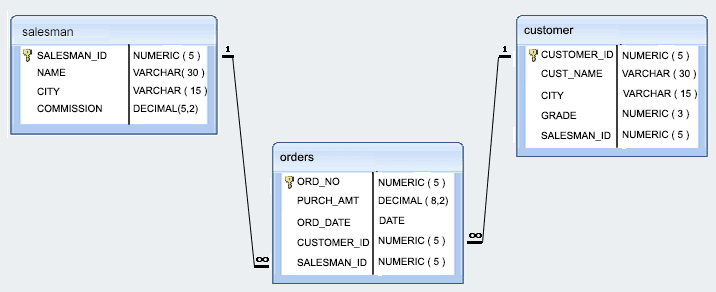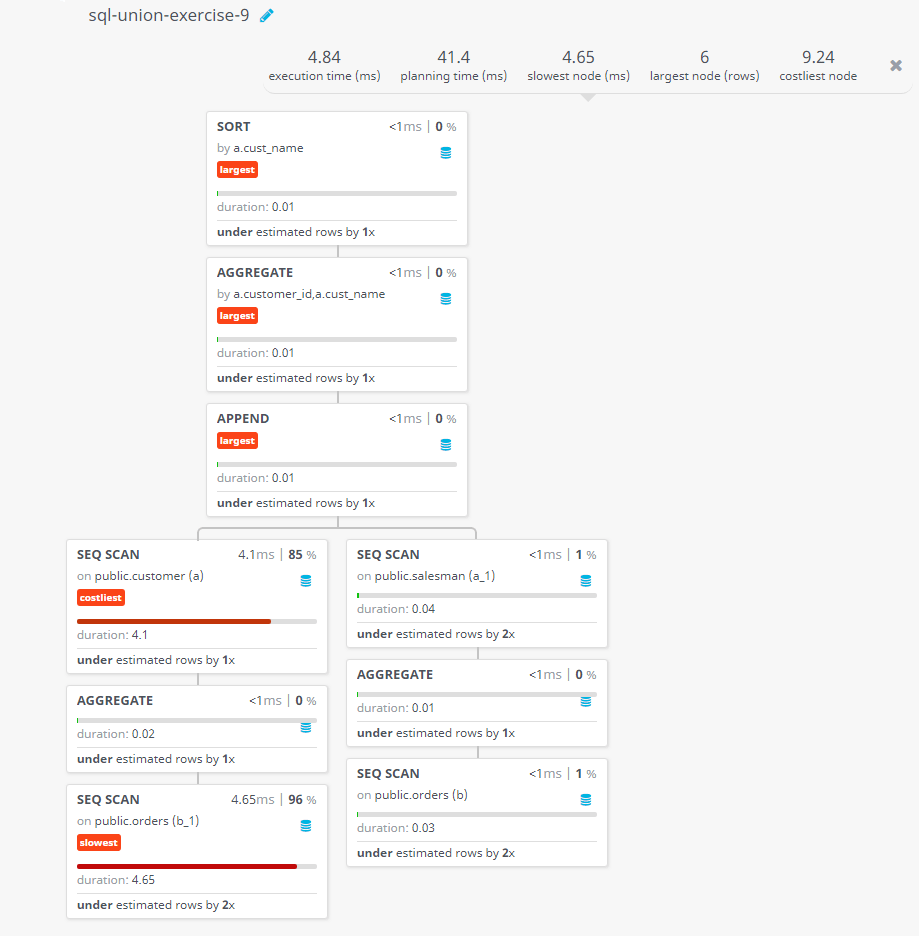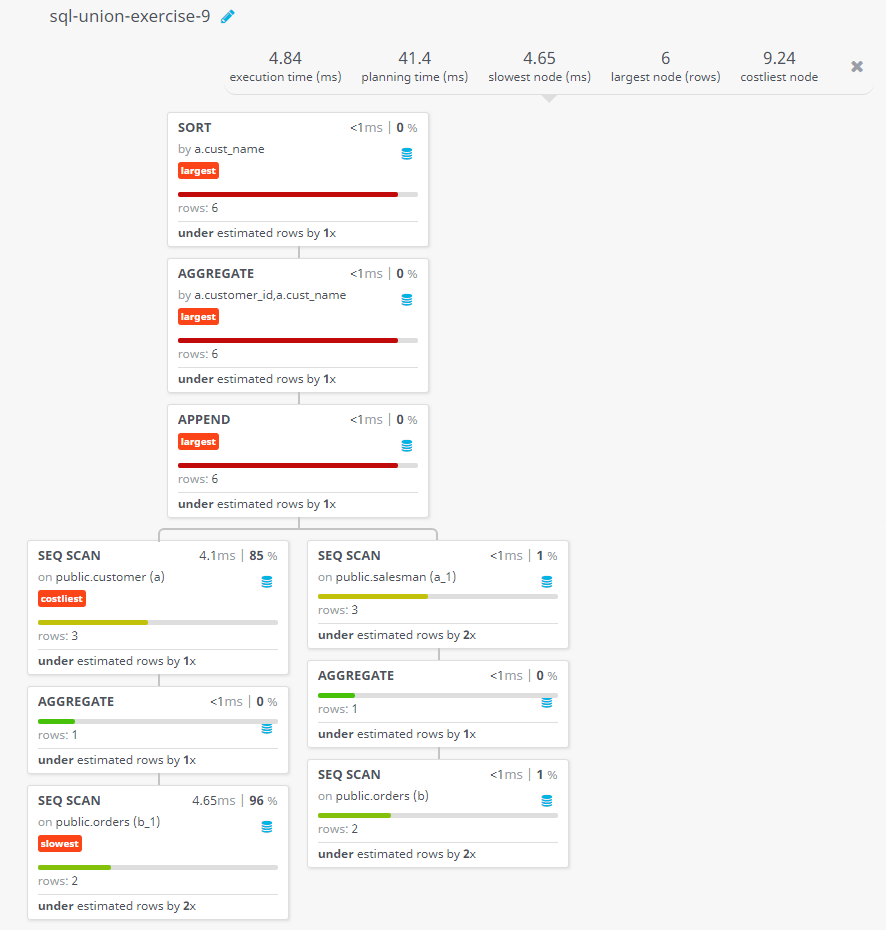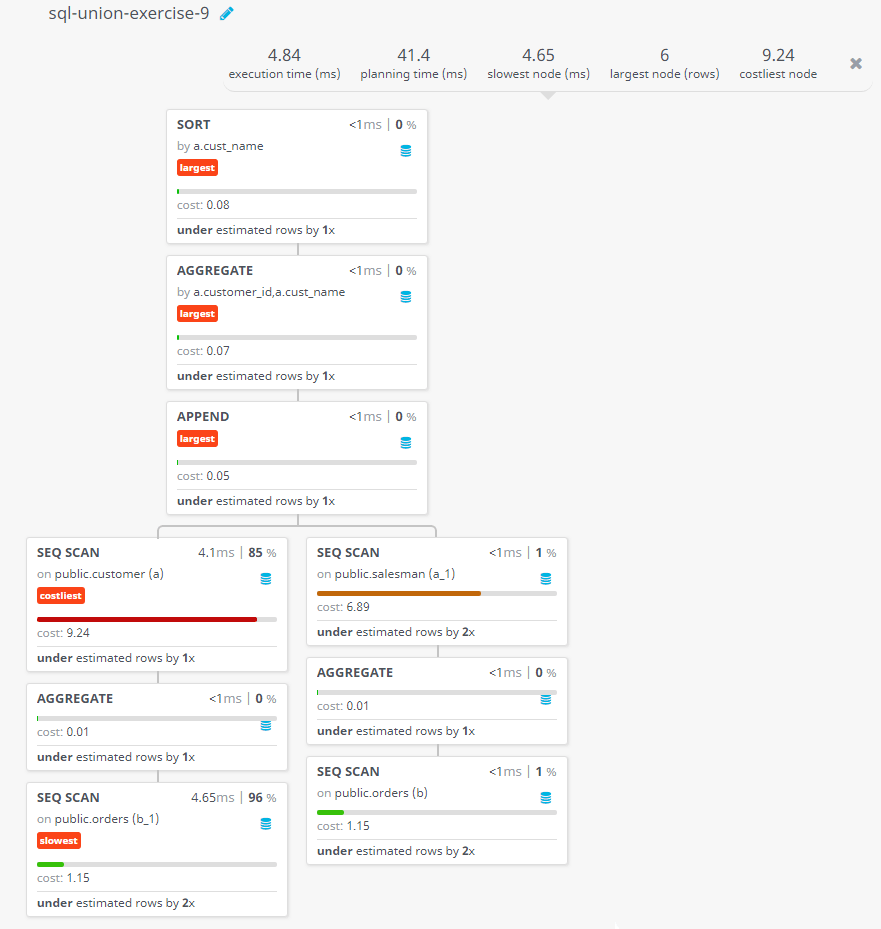SQL Exercises: Customer with more than one current order
9. From the following table, write a SQL query to find those salespersons and customers who have placed more than one order. Return ID, name.
Sample table: customer
Sample table: salesman
Sample table: orders
Sample Solution:
-- Selecting specific columns (customer_id as "ID", cust_name as "NAME") from the 'customer' table (aliased as 'a')
SELECT customer_id as "ID", cust_name as "NAME"
-- Filtering rows in the 'customer' table (aliased as 'a') where the count of associated orders is greater than 1
FROM customer a
WHERE 1 <
(SELECT COUNT(*)
FROM orders b
WHERE a.customer_id = b.customer_id)
-- Performing a UNION operation with the result set of a subquery
UNION
-- Selecting specific columns (salesman_id as "ID", name as "NAME") from the 'salesman' table (aliased as 'a')
SELECT salesman_id as "ID", name as "NAME"
-- Filtering rows in the 'salesman' table (aliased as 'a') where the count of associated orders is greater than 1
FROM salesman a
WHERE 1 <
(SELECT COUNT(*)
FROM orders b
WHERE a.salesman_id = b.salesman_id)
-- Ordering the result set based on the second column ("NAME")
ORDER BY 2
Sample Output:
ID NAME 3009 Geoff Cameron 3005 Graham Zusi 5001 James Hoog 5003 Lauson Hen 5002 Nail Knite 3002 Nick Rimando
Code Explanation:
The said query in SQL which selects customer_id and cust_name columns from the customer table and renames them as "ID" and "NAME" respectively.
The subquery checks whether at least one order placed by each customer or not. If the count of orders for a customer is greater than 1, then that customer is included in the results.
The UNION operator is used to combine the results of this query with another query that selects salesman_id and name columns from the salesman table, renames them as "ID" and "NAME" respectively, and checks if there is at least one order placed by each salesman. The final result is then ordered by the "NAME" column.
Go to:
PREV : Ratings of all customers with a comment string.
NEXT : SQL VIEW Exercises Home
Practice Online
Query Visualization:
Duration:
Rows:
Cost:
Have another way to solve this solution? Contribute your code (and comments) through Disqus.
What is the difficulty level of this exercise?
Test your Programming skills with w3resource's quiz.




